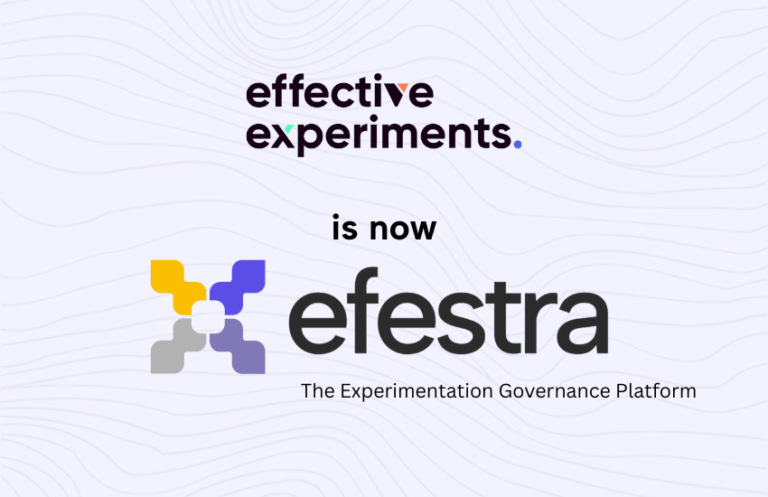Running an experimentation program at scale presents both great opportunities and significant challenges. In mid-to-large organizations, these challenges can often become overwhelming, leading to poorly run programs and wasted potential. This is where governance plays a critical role. Without proper governance, experimentation can quickly become inefficient, chaotic, and fail to deliver the desired business impact.
Moreover, experimentation without governance and guardrails leads to invalid experiments that go undetected and harm the organization because of decisions made from the faulty insights.
Governance can seem boring, scary or unnecessary to experimentation teams who prefer the more unhindered, unrestricted and loose way of doing things. Unfortunately, this has a big trade off on the quality of experiments and ultimately the validity of the insights.
In this blog post, we will talk about the importance of governance in experimentation programs, the core components, and how to effectively implement a governance framework in your organization.
But before we talk about governance, we have to look at the current situation of experimentation in organizations.
The Reality of Experimentation in Mid-to-Large Organizations
In mid-to-large organizations, experimentation programs often face several obstacles. These challenges, while sometimes subtle, have a significant negative impact on the success of experimentation efforts.
1. Scattered Documentation: As experimentation scales, teams across different departments often fail to keep consistent, centralized documentation of experiments. This leads to repeated efforts, lost learnings, and inefficient onboarding of new team members. There are so many examples of companies with different teams having multiple spreadsheets, powerpoints and other notes related to experiments and research scattered all over the place inaccessible by other teams. They become bottlenecks and gatekeepers of the data which is the exact opposite of they should be doing.
2. Haphazard Processes: Many organizations lack a structured, standardized process for experimentation. This can lead to experiments being run inconsistently, making it difficult to maintain scientific rigor or ensure that all experiments are aligned with business goals. There are many ways this shows up – but more often than not, the outcome is an invalid experiment that is no good for the business.
3. Poor-Quality Experiments: Without proper oversight and processes, teams may rush into experimentation without clear hypotheses, appropriate sample sizes, or well-defined metrics. As a result, the experiments fail to provide actionable insights.
4. Low Awareness Across the Organization: Experimentation often remains siloed within certain departments (like product or marketing), leaving others unaware of the impact experimentation can have. This lack of awareness leads to missed opportunities for collaboration and widespread adoption.
Organizations need a structured approach to overcome these challenges, and this is where governance becomes essential.
What is Governance?
Governance refers to the establishment of policies, processes, roles, and responsibilities that ensure the consistent, efficient, and strategic execution of experimentation programs. It provides a framework to manage all aspects of experimentation—from ideation to execution to analysis—ensuring that experiments are conducted with rigor, transparency, and alignment with business objectives. It ensures consistency and removes any element of doubt whether an experiment is valid or not.
Good governance ensures:
• Experiments follow a standard process.
• There is accountability at every step.
• Documentation and learnings are shared across the organization.
• Results are evaluated with a critical eye, and the appropriate actions are taken based on data.
Who Owns Governance?
Ownership of governance varies by organization, but it often rests within a combination of different roles:
• Experimentation Leaders: This could be a director of experimentation or a head of product who oversees the entire experimentation program, ensuring alignment with business strategy.
• Cross-functional Teams: Teams like product, data science, and marketing can play key roles in ensuring adherence to governance. Cross-functional collaboration is necessary to cover all aspects of the program, including data analysis, user experience, and business outcomes.
• Experiment Champions: These are team members across departments who advocate for experimentation and ensure that others are following the governance process, helping to foster a culture of experimentation.
Ultimately, whoever is made responsible for overseeing the governance also needs the backing of members in senior management who will help set and enforce the remit to follow the established governance guidelines.
Key Components of a Governance Framework
Effective governance revolves around several key components that work together to create a structured, disciplined, and impactful experimentation process.
1. Clearly Defined Processes: Establishing clear, repeatable processes for experimentation is essential. This includes having a defined flow from ideation to experiment approval, execution, analysis, and sharing results. Each step should be standardized so that teams can follow it with ease, regardless of department or location. The aim here is to remove any ambiguity and second guessing.
2. RACI Model: The RACI (Responsible, Accountable, Consulted, and Informed) framework is a tool that defines roles and responsibilities across the experimentation process. It clarifies who is responsible for conducting the experiment, who is accountable for the outcomes, who should be consulted for expertise, and who needs to be informed of the results. This reduces ambiguity and ensures that everyone knows their role.
3. Checklists: To ensure quality and consistency, checklists are essential. Checklists can be made for each and every step of the process and can cover everything from ensuring proper hypothesis development to confirming data quality before an experiment is concluded. Checklists ensure that nothing is overlooked, which is especially important in high-pressure or fast-moving environments. Checklists also help experimentation leaders to check and audit the processes.
4. Feedback Loops: Incorporating feedback loops into the governance framework is possibly the most important component. It ensures continuous improvement. After each experiment, teams should reflect on the process, what went well, and where things could be improved. This feedback should be shared across teams to improve future experiments.

How to Roll Out Governance
Implementing governance is not a one-time event. It requires continuous check ins and a thoughtful approach to ensure organization-wide adoption and continuous improvement. Here’s how you can roll it out effectively:
1. Education: Start by educating teams on the importance of governance and setting the expectations on what the outcome will be at the end of the training. This includes explaining the challenges they are likely already facing (such as scattered documentation or haphazard processes) and how governance can help resolve these issues. Training programs and workshops can be helpful for aligning everyone on the framework. Training must be given in phases to embed the new or improved processes and ensure that the individuals understand what their role will be in the process.
2. Monitoring: Implement monitoring to ensure adherence to governance. This can involve regular reviews of experimentation processes, conducting audits of experiment documentation, and tracking key metrics that indicate whether experiments are being run efficiently and consistently.
Effective Experiments’ Experimentation Ops Management Platform enables experimentation leaders to implement and monitor governance within minutes.
Learn more about how Effective Experiments enables consistent experimentation at scale
3. Coach & Improve: Governance is not static. It requires continuous coaching and refinement. Appoint governance champions who can coach teams on best practices, review failed experiments to identify where governance breakdowns occurred, and continually refine processes based on lessons learned.
Governance is the backbone of any successful experimentation program. It provides the structure, consistency, and accountability needed to ensure that experiments are of high quality and contribute to business success. By addressing the challenges of scattered documentation, haphazard processes, and low awareness, a strong governance framework enables organizations to scale experimentation effectively and make better, data-driven decisions.
To truly succeed in experimentation at scale, mid-to-large organizations must prioritize governance as a critical component of their experimentation programs. It’s not just about running more experiments—it’s about running experiments that are meaningful, rigorous, and impactful.



